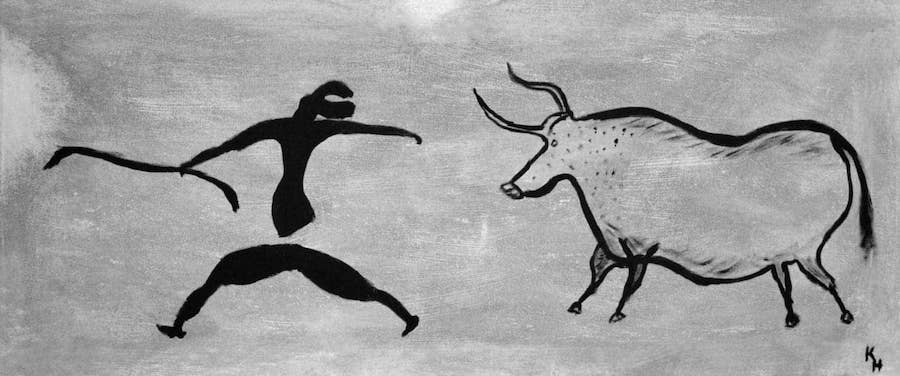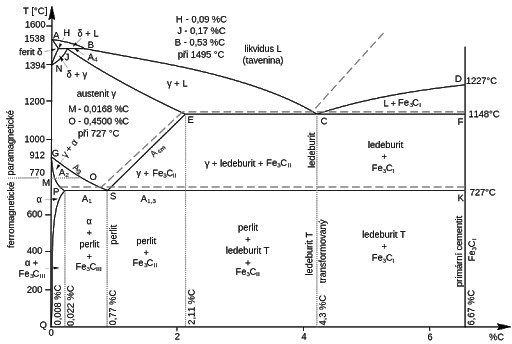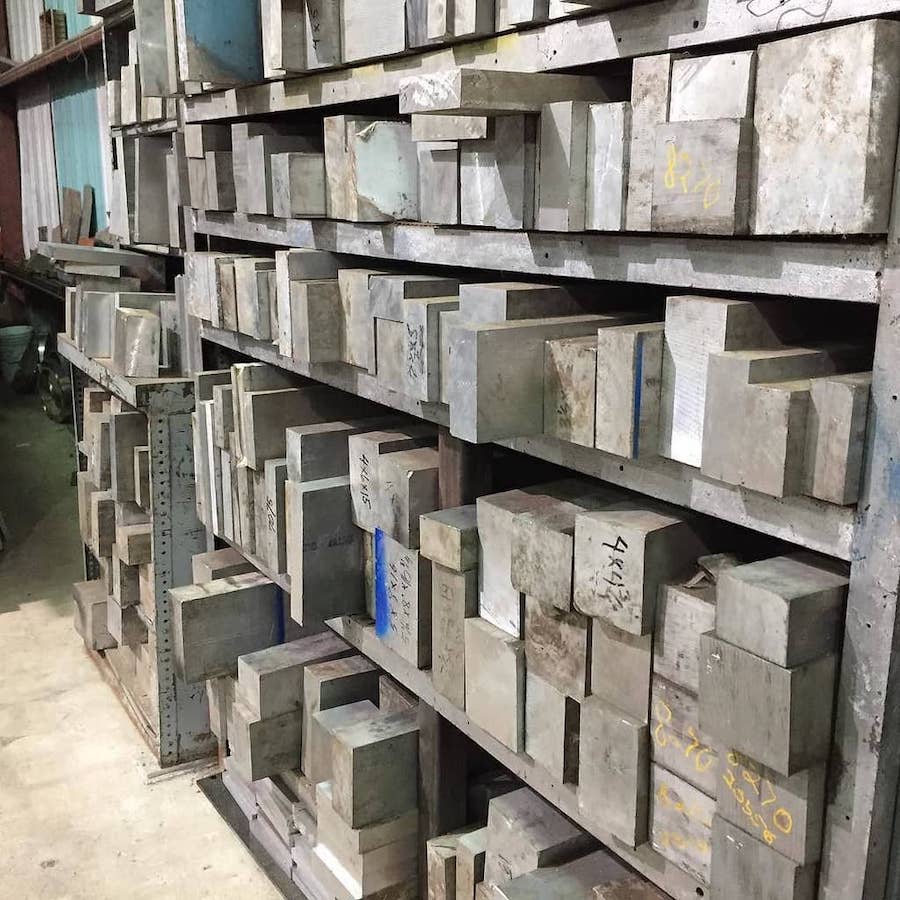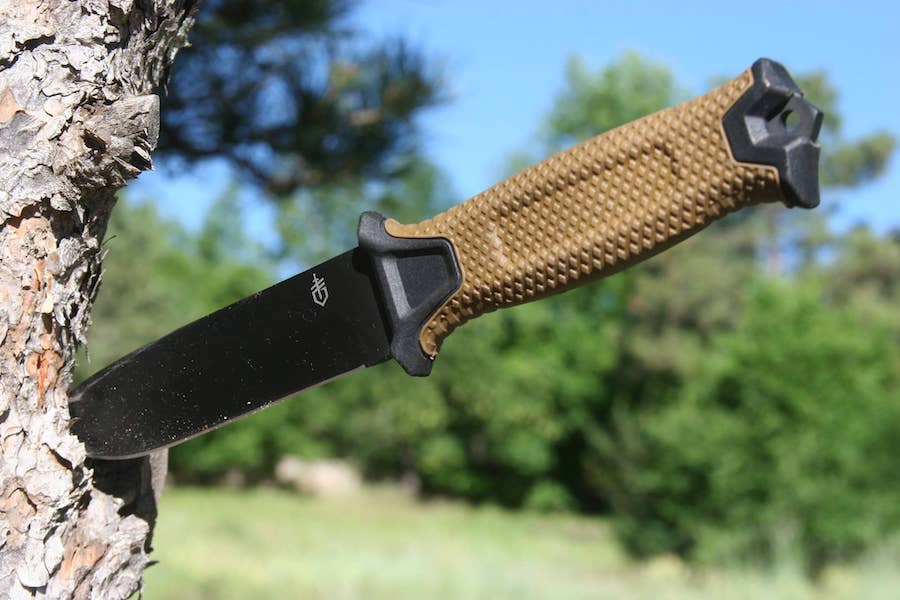Alloying
Knife. I don't know how you perceive it, but for me, it's precisely the knife that is a man's best friend. I have a dog myself and I wouldn't give him up. However, I love knives with all my heart. A tool that has been used since man realized he needed something to hunt and survive. Initially, in the Stone Age, worked flint was used as a blade. Over time, through all the periods and levels of human history, knives have evolved through bronze and iron to today's advanced materials. Thanks to this, we have a lot, I think around 2,500, types of steel from which knives are made. Wasn't it easier before? I highly doubt that our ancestors in the Mesolithic period sat by the fire and discussed whether his flint had greater cutting ability than another's flint. But maybe I would be surprised. When you find such a cave painting, let me know.

Thanks to the diversity of today, we can be a bit spoiled and choose from a vast range of materials. Unfortunately, this brings a bit of controversy into our minds, and we think differently about some things. It's no different with the steels used for knife blades. To bring you a bit down to earth, I'll try to divide, explain, present, and compare the materials used for knives today. Yes, I know. I'm probably a bit crazy for delving into this topic because many people will protest and say it's different. Unfortunately, that's the way it is with this topic. Let's not be afraid of the wolf, let's get to it.
What is steel anyway?
Just quickly. Before I can start telling you how stainless steel is better at this and that, I'd like us all to have the same definition of steel fresh in our minds. Forget the term iron. Iron is an element and remains so. It's been a long time since knives were made just from it. Today, it's used only as a majority additive. So, what is steel? Steel is an alloy of iron, carbon, and other accompanying elements governed by the iron-carbon phase diagram, also known as Fe-C. Furthermore, it is divided into structures such as martensite, bainite, and others, but that's for another article. Steel contains carbon up to a maximum of 2.14%. After that, it's not steel but cast iron. Remember this fact well; it will come in handy later. Depending on the carbon content, we talk about low carbon steel (up to 0.3% C), medium carbon (0.3-0.6% C), medium-high carbon (0.6-1.0% C), and finally, high carbon (1-2% C). Steels further develop, enrich, and divide. And here we are…!

In addition to the basic composition, that is iron with carbon, there are so-called accompanying and undesirable elements in the steel. Among the accompanying ones is mainly manganese (Mn), which bonds sulfur (S). It, along with phosphorus (P), is considered undesirable. They occur in the basic ore or the atmosphere during steel production. They disrupt the structure and cause trouble. Remove them completely? Yes, that would be great, but unfortunately, it's not so easy. Other elements are added to steel to improve its properties. More information on this process, called alloying, can be found in the appropriate article. To speed things up, I don't want to force you to read the entire article. Although I wrote it and it's just great, time is limited. So let's quickly list the alloying elements
| Carbon (C) | Yes, it's not a classic alloying element, but it's important to know that it is responsible for the hardness of the material. The more carbon, the harder the material |
| Manganese (Mn) | Increases strength, does not decrease plasticity, increases hardenability |
| Chromium (Cr) | Increases corrosion resistance, strength, hardenability |
| Molybdenum (Mo) | Increases machinability, corrosion resistance, heat resistance |
| Nickel (Ni) | Provides better plasticity, refines crystallization, increases toughness |
| Silicon (Si) | Increases oxidation resistance |
| Tungsten (W) | Improves hardenability, machinability, stability, and hardness |
| Vanadium (V) | Improves fatigue resistance, elasticity, machinability |
| Boron (B) | Increases strength at higher temperatures |
| Aluminum (Al) | Reduces aging susceptibility |
| Cerium (Ce) | Deoxidizes the material |
| Cobalt (Co) | Increases machinability |
| Copper (Cu) | Improves hardenability, resistance to atmospheric corrosion |
| Niobium (Ni) Tantalum (Ta) | Occur together, increase strength at heat |
Based on the content of the alloying elements, we then talk about low, medium, or highly alloyed steel. But back to the point. We have the theory.
How many are there? One, two?

Three, please! Precisely three. To explain better, we can divide steels according to several different criteria. Chemical composition? Physical properties? Industrial use? Let's do it differently and say the number "three". Because when it comes to steels for knife blades, I divide them into exactly three groups, and they are as follows.
- Carbon steels - This group is the most widespread. Its production is the simplest and also the cheapest. We could define it as steel with a basic composition, that is iron carbon, manganese, sulfur, and phosphorus. They can be further divided into subcategories such as low, medium, or high carbon. The important thing is to know that carbon steels are not alloyed, that is, not like others. Their maximum percentage of alloying elements is 2%. Such a low percentage cannot change the properties of the resulting material as the classic alloying elements. The advantage of carbon steels is mainly their availability and low price. Unfortunately, they are very susceptible to corrosion.
- Tool steels - Many people categorize tool and carbon steels in one bag. This is, in my opinion, wrong. Why? Yes, tool steels usually have a higher carbon content and yes, they are not stainless steels because the chromium percentage is less than 13%. Oops, I just gave away the definition of stainless steels. SPOILER ALERT! These facts, however, do not make them carbon steels. It's like saying that an elephant is a bird because it's not a stone. Simply wrong categorization. Tool steels are often alloyed with the elements we mentioned in the previous section. Their properties are already much more interesting than those of carbon steels, but the production price is higher. Based on this, the price of the final product is often several times higher. This type of steel can handle corrosion quite decently. It requires lower maintenance, offers good machinability and hardness.
- Stainless steels - The last group is these well-known materials. They can have high carbon content just like tool steels, but they also have something extra. Yes, it is a high percentage of alloying elements. As I carelessly revealed with tool steels, it is not stainless steel if it has a chromium content lower than 13%. This is the law according to the American AISI. And what our western friends say, that's the truth. Stainless steels have great corrosion resistance. Who would have thought, right? But be careful, they are definitely not 100% resistant. Even with stainless steel, we should maintain basic maintenance. The disadvantage of this group is the high production price.
So we divided it. I hope you agree with me on this. Now we are waiting for the comparison of some properties that we always require from steels. Remember how I mentioned in the previous section: each group I mentioned can be further divided according to carbon content, alloying elements, and other criteria. But why make needless chaos in it.
Comparison of Properties

The following section is very, very debatable. However, that does not stop me. I would like to discuss with you the basic properties of knives and associate them with a group of steels, not a specific steel. I wouldn't dare.
Hardness
The hardness of the material is very important to us. This property practically determines how the knife will hold an edge, of course after quenching. In the cutlery industry, hardness is measured using Rockwell's methods (indentation of a diamond cone into a material). The unit abbreviation is HRC. The scale is considered sufficient from 58 HRC. Materials that achieve high hardness have a result of about 62-63 HRC (some even 66).
In this category, carbon and tool steels win. Their high carbon content promises high hardness and thus edge retention. Stainless steels are in second place. We often encounter low hardness, especially in cheaper types, due to the low carbon content.
Toughness
The question of how tough the material is a question of composition. Toughness provides the knife with resistance to bending loads. The knife can return to its original position even at a high bending angle without permanent changes (cracks, etc.). The brittleness of the material is thus a problem that often needs to be addressed.
In toughness, stainless steels win, closely followed by tool steels. Thanks to alloying, toughness and elasticity are improved. In last place are carbon steels, which are considered relatively brittle.
Resistance to Wear
We want to carry a knife with us every day. The fact that the blade starts to show hairline scratches and the knife is worn more and more breaks our hearts. At least mine does! Closely related to this property is the hardness of the material.
Therefore, it is clear that carbon and tool steels again win in this category.
Sharpening Ability
A property expressing how well the knife sharpens and maintains its edge.
Again, tool and carbon steels dominate the category. Carbon steels are slightly ahead of those tool steels in this category. The composition and variety of stainless steels place them last.
Resistance to Corrosion
Every knife should have corrosion resistance at a high level. It doesn't matter if it's a kitchen knife. The juices in fruit and vegetables are often much more aggressive than water itself. Therefore, it is important to have a knife with corrosion resistance.
In this category, stainless steels clearly win. Right behind them are tool steels, and at the end are carbon steels. They require much more maintenance than other groups of steels.
These 5 categories or properties are the ones I nominated as worth listing here. I didn't want to delve into categories like machinability because we, as end users, are not interested. Before you start looking for an email address and writing how you disagree with the article, let me add to the previous information. I was generalizing. Of course, each group of steels has representatives that can compete with representatives from another group. Carbon steels can be, for example, surface treated, and so they are also corrosion-resistant. And so on. Now, I would like to introduce my representatives of the individual steels.
Ambassadors of Individual Groups
I allowed myself to select three representatives from each group that will represent it. I deliberately try to choose different steels to illustrate the diversity of individual groups. I selected based on my experiences and those around me.
Representatives from the Carbon Realm
Steel 1095
This steel is a carbon rock-star. It is the most used, i.e., the most popular carbon steel. 1095 is high-carbon with a carbon content of around 1%. It is unalloyed. It is commonly quenched in water. After proper heat treatment, it achieves a hardness of up to 66 HRC. However, it usually ranges around 60-62 HRC. This steel is proof of what I wrote above. It is very hard, sharpens well, but unfortunately, it is not resistant to corrosion at all. However, if you cover it with a surface treatment, it will serve like few others. If you want to try this steel, I recommend focusing on thinner blades.
Steel 1055
In its essence, it is a construction steel, a common, inexpensive material. That is simply what 1055 is. By the last two numbers, we know that the carbon level is 0.55%, so medium-high. It is originally used for springs, connecting rods, or shafts. With proper heat treatment, it achieves a hardness of about 62 HRC. It is suitable, for example, for sword production. Unfortunately, it has zero resistance to corrosion.
Steel 52100
Similar to the 1095 steel, 52100 is also a high-carbon steel (0.55% C). However, there is a slight change here. The steel is slightly alloyed with chromium at values of 1.6%. It achieves a relatively lower hardness than the previous version. Typically around 59 HRC. The chromium content provides slight corrosion resistance but mainly improves hardenability. 52100 is very popular, similar to its sister.
Tool Steel, Never Disappoint
Steel D2
I really like this steel, similar to many others. For me, it's a representative of tool steel that could almost be stainless. The chrome content is 12%, just on the edge of the definition of stainless steels. D2 is very popular in cutlery. It was designed as a die steel for cold forging, but that doesn't bother anyone. Just imagine what the steel has to endure in this forming technology. Besides chromium, it also contains 1.4-1.6% carbon, 0.3% nickel, 1.1% vanadium, 1% molybdenum. Besides being a high-carbon steel, it is also highly alloyed. It achieves a hardness of 58-62 HRC and is resistant to corrosion. That makes it a great but unfortunately also expensive choice.
Steel CPM 15V
I personally really like the steels from CMC® foundries. We will discuss that in the next section. I mainly chose this steel because it is a bit atypical. Thanks to its manufacturing technology (CPM = powder metallurgy), the steel is packed with carbon to the final value of 3.4%. Yes, I know, I said at the start that above 2.14% carbon is considered cast iron. It's precisely powder metallurgy that can get more carbon into the steel. Besides, it also contains 14.5% vanadium, 5.25% chromium, and 1.3% molybdenum. Again, highly alloyed. Due to such a high carbon and vanadium content, the steel is incredibly hard, often reaching 65 HRC. It allows cutting through sheet metal like butter without any damage. It is suitable for areas where extreme load on the edge is expected.
Steel L6
I chose this steel because it is with the tool steels with low alloying elements content, containing 0.7% carbon, 1.2% chromium, 2% nickel, 0.3% vanadium, and 0.5% molybdenum. Interestingly, despite the carbon content below 1%, it achieves a hardness of up to 66 HRC, which is really a lot. The steel is considered high-carbon high-carbon. It has very good wear resistance, is tough, and suitable, for example, for long blades. Unfortunately, the steel does not offer high corrosion resistance.
Is Stainless, Rusty?
440C
This steel is a celebrity among stainless steels. Along with the entire 440 family, it is often chosen for blades that are affordable but offer lots of great features. It contains a high carbon content, about 1.2%, but most importantly – 18% chromium. Such a content guarantees great corrosion resistance. Thanks to the higher carbon content, it achieves a hardness of up to 59 HRC. Here it represents the middle class of stainless steels.
CPM S35VN
Yeah, I know. I wouldn't be me if I didn't bring out a metallurgical gem, which CPM S35VN is to me. This steel is my best friend. I carry it with me every day on my Zero Tolerance knife. As stainless steel, it represents a higher class. Produced via powder metallurgy, it offers great properties, including very good toughness, corrosion resistance, but also hardness up to 64 HRC (usually 59-61 HRC), which is very decent for stainless steel. This is mainly due to the higher carbon content (1.4%) and modern manufacturing technology.
5Cr15MoV
This stainless steel is more of a lower class. It is the equivalent of German steel X50CrMoV, a chromium molybdenum vanadium steel with a carbon content of 0.5%. Besides good corrosion resistance, it only offers lower hardness values of 54-56 HRC, which is very little. However, it sharpens relatively well, which is certainly welcomed by everyone with such a relatively soft steel. Why not!
Suitability and Conclusion
I have summarized everything I wanted. We looked at the categorization, said a few things that I believe are very important. If only it were simple and we could calmly say which steel is most suitable for what. Of course, we can define a few milestones and follow them. However, that does not mean we have won. I wanted to look at the suitability of individual steels for specific applications in the conclusion, but this topic is already very specific, and I have witnessed people arguing over it. Of course – a machete for the jungle will be stainless steel, and a heavy-duty knife from which we expect nonsensical durability will most likely be made from tool steel. Oops, I probably triggered a storm of questions that each reader started asking themselves. So I'll put it simply. Choose a knife as you feel. Do you want a cool knife everyone will envy you, won't have corrosion problems, and will last longer than Amundsen's will to reach the South Pole? Get a knife from stainless steel from leading manufacturers. On the other hand, there is nothing better than a proper full tang knife from D-two. Where is the answer then? We each have to find it ourselves…




























































































































